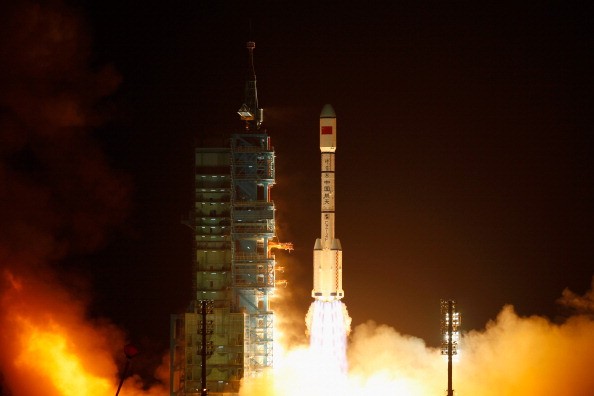China is getting a better understanding of how the sun affects spacecraft thanks to a new sun simulator.
The simulator, which started operations in Beijing in June, is a chamber specially designed to simulate the sun's effects in space, the South China Morning Post reported. About the size of a regular living room, the chamber features an array of high=power overhead lamps and special lenses that replicate the sun's heat and light from 120 million kilometers away.
The room also serves as a controlled vacuum chamber and features walls that are cooled to near absolute zero, which simulates the extremes of outer space.
And while it is slightly smaller than NASA's VF-6 solar simulation chamber, the simulator's developer 207 Institute of the China Aerospace Science and Industry Corporation sat that their facility is able to deliver 1.3 solar constants to a target compared to the former's 1.2 solar constants.
A solar constant is the average amount of energy from the sun that falls on the Earth, equivalent to about 1.35 kilowatts per square meter per second.
According to the institute, the chamber can be used to test how a variety of materials are affected by the hazards of space, which will lead to the development of new technology and hardware that will be able to survive in the harsh environment better.
China's space program is no stranger to the severe effects of solar radiation to space vehicles. In 2013, its Yutu lunar rover suffered a damaged electric motor after traveling just 20 meters from its landing site due to the hot lunar day and extremely cold night (peaking at 123 degrees Celsius and -153 degrees Celsius respectively).
Meanwhile, the country's first space laboratory Tiangong-1 could be possibly hurtling uncontrollably back to Earth, experts said.
The spacecraft, which was launched in 2011, was expected to return to Earth in a controlled reentry by 2017. However, some astronomers have aired the concern after Chinese authorities lost control of the decommissioned satellite several months ago, News.com.au reported.
However, Center for Space Standards & Innovation senior research aerodynamicist T. S. Kelso said that the concerns might be overblown. He added that, while he does not have a direct way of measuring Tiangong-1's stability at the moment, it is likely that its rate of decrease in altitude would slow down, indicating that the satellite is entering a more stable trajectory.
Kelso said that this might be the reason why Chinese space authorities are not responding to the situation.
Tiangong-1's successor Tiangong-2 is set to be launched in September.



























